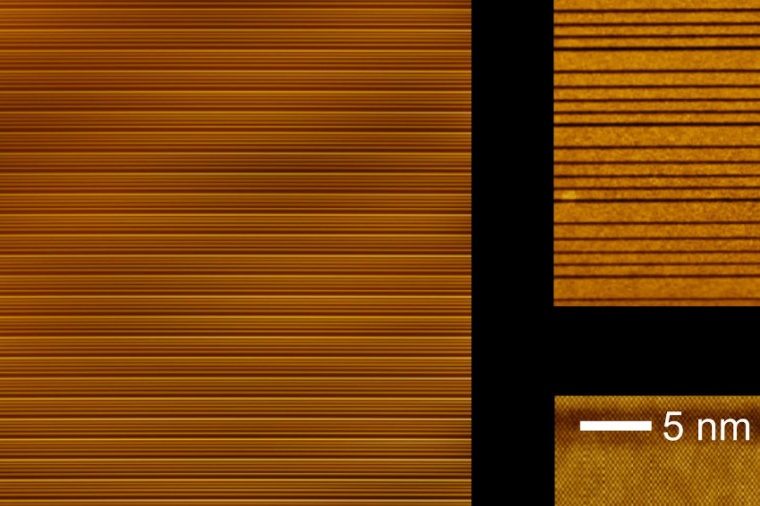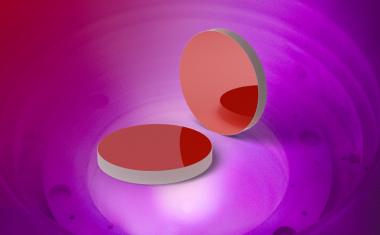Lights on for silicon photonics
Electroluminescence at terahertz frequencies from a silicon-germanium device.
An international team led by Giacomo Scalari and Jérôme Faist from the Institute for Quantum Electronics present an important step towards new silicon photonics device. They report electroluminescence from a semiconductor structure based on silicon-germanium (SiGe), a material that is compatible with standard fabrication processes used for silicon devices. Moreover, the emission they observed is in the terahertz frequency band, which is of high current interest with a view to a variety of applications.

The main reason why silicon cannot be used directly for building a laser following to the GaAs template has to do with the different nature of their band gaps, which is direct in the latter but indirect in the former. In a nutshell, in GaAs electrons recombine with holes across the bandgap producing light; in silicon, they produce heat. Laser action in silicon therefore requires another path. And exploring a fresh approach is what doctoral researcher David Stark and his colleagues are doing. They work towards a silicon-based quantum cascade laser (QCL). QCLs achieve light emission not by electron–hole recombination across the bandgap, but by letting electrons tunnel through repeated stacks of precisely engineered semiconductor structures, during which process photons are emitted.
The QCL paradigm has been demonstrated in a number of materials but never in silicon-based ones, despite promising predictions. Turning these predictions into reality is the focus of an interdisciplinary project funded by the European Commission, bringing together a team of leading experts in growing highest-quality semiconductor materials at the Università Roma Tre, characterising them at the Leibniz-Institute for innovative microelectronics in Frankfurt (Oder) and fabricating them into devices at the University of Glasgow. The ETH group of Scalari and Faist is responsible for performing the measurements on the devices, but also for the design of the laser, with numerical and theoretical support from partners in the company Nextnano in Munich and at the Universities of Pisa and Rome.
With this bundled knowledge and expertise, the team designed and built devices with a unit structure made of SiGe and pure germanium, less than 100 nanometers in height, which repeats 51 times. From these heterostructures, fabricated with essentially atomically precision, Stark and co-workers detected electroluminescence, as predicted, with the spectral features of the emerging light agreeing well with calculations. Further confidence that the devices work as intended came from a comparison with a GaAs-based structure that was fabricated with identical device geometry.
Whereas the emission from the Ge/SiGe structure is still significantly lower than for its GaAs-based counterpart, these results clearly signal that the team is on the right track. The next step will be now to assemble similar Ge/SiGe structures according to a laser design that the team developed. The ultimate goal is to reach room-temperature operation of a silicon-based QCL.
Such an achievement would be significant in several respects. Not only would it, at long last, realize a laser on a silicon substrate, thereby bringing a boost to silicon photonics. The emission of the structures is in the terahertz region, for which currently compact light sources are widely missing. Silicon-based QCLs, with their potential versatility and reduced fabrication cost, could be a boon for the large-scale use of terahertz radiation in existing and new fields of application, from medical imaging to wireless communication. (Source: ETHZ)
Link: Project Flash, Horizon 2020, Brussels, Belgium • Quantum Optoelectronics Group, ETH Zurich, Zurich, Switzerland











